
Solutions
Smart Logistics | Smart Manufacturing | Asset Management (Active & Passive)
Internet of Things | Enterprise Network | AI & Data Analytics | Disaster Recovery as a Service
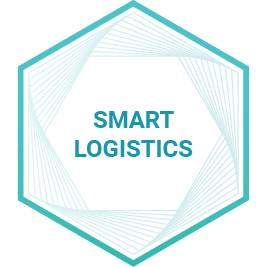
Smart Logistics
Strategically designed to maximise effectiveness and efficiency, a smart warehouse ultimately reduces inaccuracies and achieve lower operational expenses and better workflow efficiencies.
Deployment of appropriate smart technologies that are unique to your business needs optimise real-time visibility, enhance agility and scalability. For instance, Smart Warehouse IoT Applications such as 3D Heatmap, Asset Management, Asset Tracking (RTLS), Inventory Optimisation, Predictive Maintenance and Automation that utilise IoT Sensors, e.g. RSSI, Motion, GPS, Light and temperature.
In addition, smart technology such as RFID tags which do not require line-of-sight to operate, are gradually used in warehouses to replace barcodes. Warehouse Management Solution (WMS) developed by CNCL leverages on RFID technology to obtain and store data, provide real-time information and automate transactions.
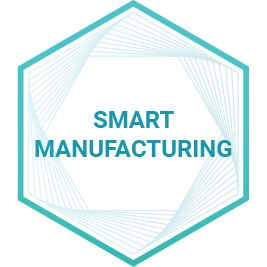
Smart Manufacturing
Smart manufacturing harnesses data to streamline business operations, optimise productivity and improve ROI. By collectively implementing a combination of various technologies and solutions in a manufacturing ecosystem and connecting every device, machine and/or process through data communication systems, real-time data can be collected and analysed for decision making and problem solving.
For instance, operational status and performance data collected from manufacturing machines that have been embedded with sensors allow manufacturing engineers and data analysts to identify signs of potential equipment failure and schedule for preventive maintenance to avoid unplanned downtime. In addition, by analysing trends from data collected from the entire production process, manufacturers will gain insights of any processes where production slow down or inefficient use of materials. To identify the most efficient ways of doing things, analysts can utilise these data to run simulations. It is also possible for smart manufacturing systems to automatically order more raw materials in real-time when inventory reaches a certain threshold level.
In addition, by analysing trends from data collected from the entire production process, manufacturers will gain insights of any processes where production slow down or inefficient use of materials. To identify the most efficient ways of doing things, analysts can utilise these data to run simulations. It is also possible for smart manufacturing systems to automatically order more raw materials in real-time when inventory reaches a certain threshold level.
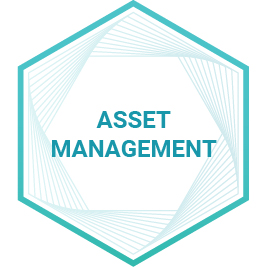
Asset Management (Active & Passive)
As businesses grow, the proliferation of IT assets within an organisation has made tracking of IT assets complicated and challenging, which prevented optimised usage of IT assets. Typically, hardware assets include desktop computers, laptops, physical servers in data centers, mobile devices and printers, while software assets include applications which require licenses per user or machine, SaaS applications and open-source based software systems and databases.
To maximize the value of an asset to the business, IT Asset Management (ITAM) provides end-to-end tracking and management of IT assets, hence ensuring that every asset is properly used, maintained, upgraded and disposed of at the end of its lifecycle.
The 3 key processes in ITAM are:
- Asset Identification: To enable visibility and optimise redundant assets for greater efficiency, a detailed inventory of all IT assets has to be created first.
- Tracking: To continuously monitor IT assets, information collected of each asset includes financial (asset costs), contractual (warranties, licenses and SLAs) and inventory data (location and condition of physical assets)
- Maintenance: To assess the condition of the asset, all maintenance activities, e.g. repair, upgrade and replacement, which are performed according to their lifecycle stage are logged.
Ultimately, ITAM leads to efficient use of resources, mitigates risk, minimise waste and reduces cost, as well as facilitates strategic decisions making, e.g. ways to maximise existing IT assets, when and whether to invest in new IT assets and how to maximise returns of aged IT assets during disposal.
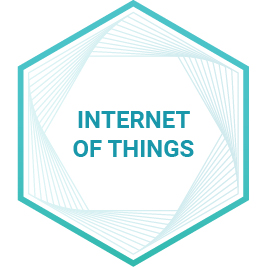
Internet of Things (IoT)
Internet of Things (IoT) has increasingly been embedded in our lives and within organisations, just like how sensors, software and other technologies are embedded in physical objects (“things”) to collect, send and act on data. The IoT is a giant network of devices that connects and exchanges real-time data with other devices and system over the internet.
Smart devices communicate real-time data collected from its environment, user inputs or usage patterns to and from its IoT application over the internet. The IoT application integrates data received from various IoT devices and utilises machine learning algorithms to analyse the massive amount data and present data to business users via dashboard to provide visibility of key performance indicators. Depending on business case, artificial intelligence technology can be utilised to make informed decisions and communicate back to the IoT device. These IoT devices can be managed through a graphical user interface such as mobile application or website.
Deriving data-driven insights from IoT data enable businesses to increase productivity and efficiency of business operations and identify new business models and revenue streams. For example, manufacturers can reduce operating costs, achieve better uptime and improve asset performance management through the use of production-line monitoring to activate preventive maintenance on equipment when sensors detect a potential failure due to anomaly in production output.

Enterprise Network
Enterprise network has become an integral part of midsize and large organizations to provide fast and reliable connectivity among devices, users and internal/external applications to exchange data and run business process.
Enterprise networking infrastructure comprises of networking appliances, e.g. Routers, Switches, Controllers, Gateways, Firewalls, Load balancers and VPN servers) that are connected to each other and to devices through Ethernet cables or WiFi signals. Every organisation’s enterprise network is unique and it has to be designed, provisioned, and optimized according to its own purpose and business objectives. For example, depending on operational and departmental requirements, an enterprise network may include LAN (local area network) or WAN (wide area network).
As organisations are embracing digital transformation, e.g. adoption of the cloud, big data analytics, Internet of Things and artificial intelligence, to enhance efficiency and performance, it is vital for enterprise networks to be well-designed for scalability to cope with the demand.
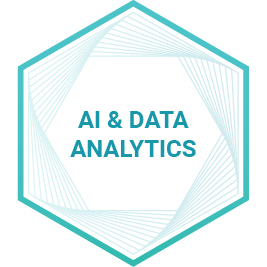
AI & Data Analytics
One of the primary drivers for data analytics is to make sense out of the massive volume of data that is being generated and collected by organisations. By gaining insights, organisations will be able to make more strategically-guided decisions such as driving new revenue and growth opportunities, improving operational efficiencies, optimising resource management and determining root causes of issues. There are 4 types of data analytics: descriptive (what happened), diagnostic (why it happened), predictive (what is likely to happen) and prescriptive (what should be done next).
As the amount of data collected continues to grow at an exponential rate, more than what a spreadsheet or human can handle, data scientists leverage on Artificial Intelligence (AI) to eliminate manual data extraction from structure or unstructured sources and accelerate data analysis with higher accuracy.
Advancement in AI has made it more accessible and common for organisations to adopt AI to unlock business values. AI relies primarily on technologies like Machine Learning and Deep Learning to train computers to perform a myriad of human-like tasks and advanced functions, e.g. language translation, analyse data and make recommendation. For instance, by collecting data of an organisation’s enterprise network operations and turning it into actionable insights, issues can be identified, prioritised and rectified. In addition, coupled with AI capability, the system will provide recommendation to resolve network issues.
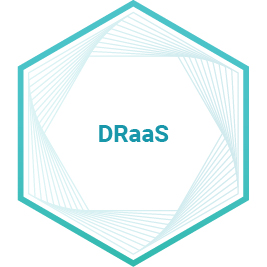
Disaster Recovery as a Service
In this digital age, most organisations rely on its IT capability to run business operations. To prevent downtime or data from being compromised, organisations will do its due diligence to perform regular monitoring and maintenance of its IT appliances, applications, network infrastructure and cyber security. However, disasters, e.g. human error, equipment failure, power or network outages and cyberattacks, that are unexpected or not within your control despite best efforts can happen anytime without warning. To ensure business continuity, disaster recovery planning is critical to minimise data loss and disruption to services.
Disaster-Recovery-as-a-Service (DRaaS) solution offered by a third-party service provider enables an organisation to replicate its data and IT infrastructure in the service provider’s cloud computing environment at a stipulated frequency. To quickly recover services and keep business operations running when disaster strikes the primary site, initiation of failover will transit end-user access to applications and data to the DRaaS vendor’s datacenter, where latest instance of replicated snapshots has been spun up. Once a disaster has been mitigated, failback process will transit end-user access back to the primary site along with snapshot captured during the failover mode.
Regardless of which type of DRaaS solutions, i.e. Self-Service, Assisted or Managed, being chosen, the need for provisioning and maintaining an organisation’s in-house disaster recovery environment can be eliminated and organisations will be able to save money and optimise internal resources.
© Copyright Computer Network Communication Labs